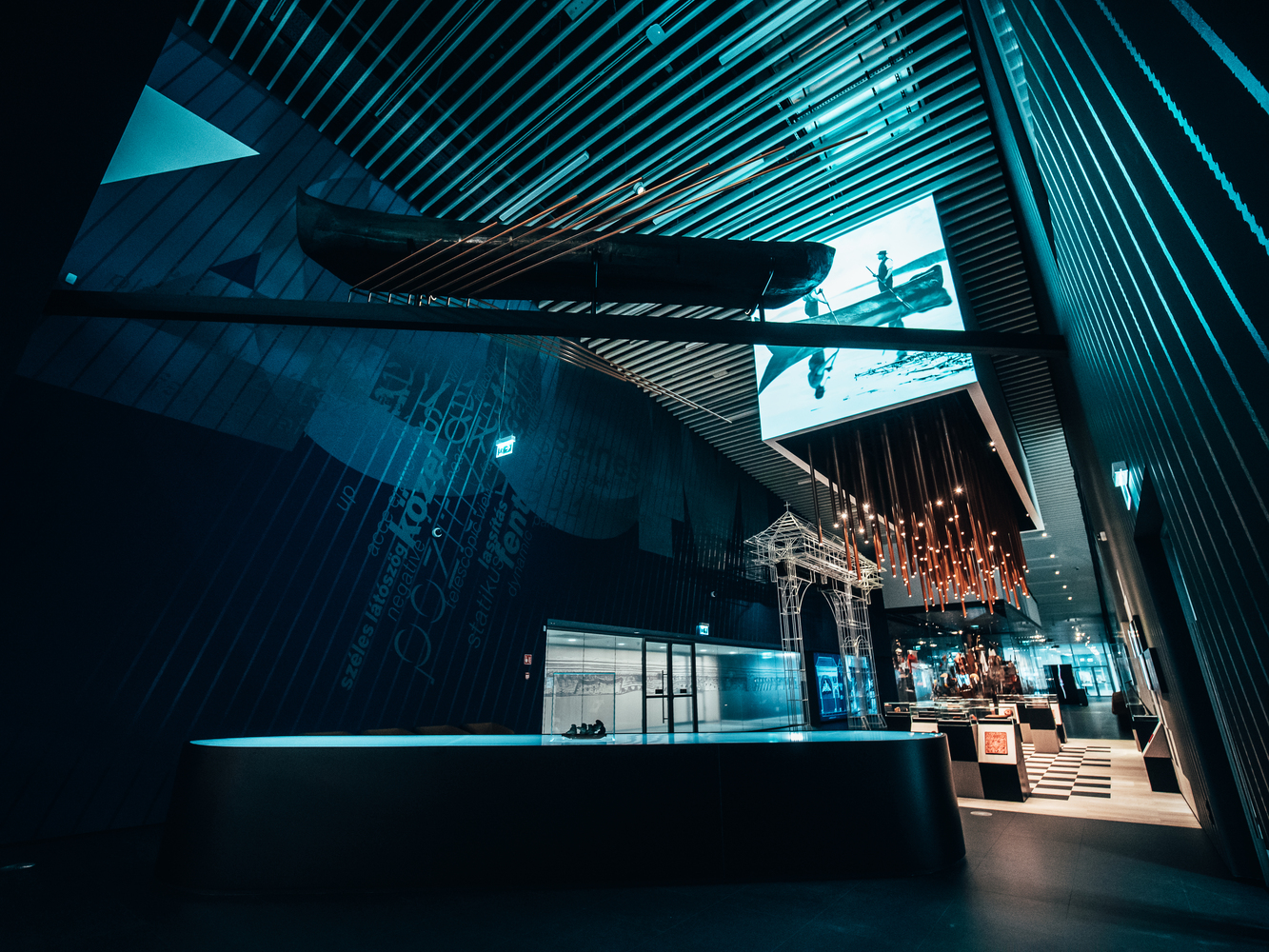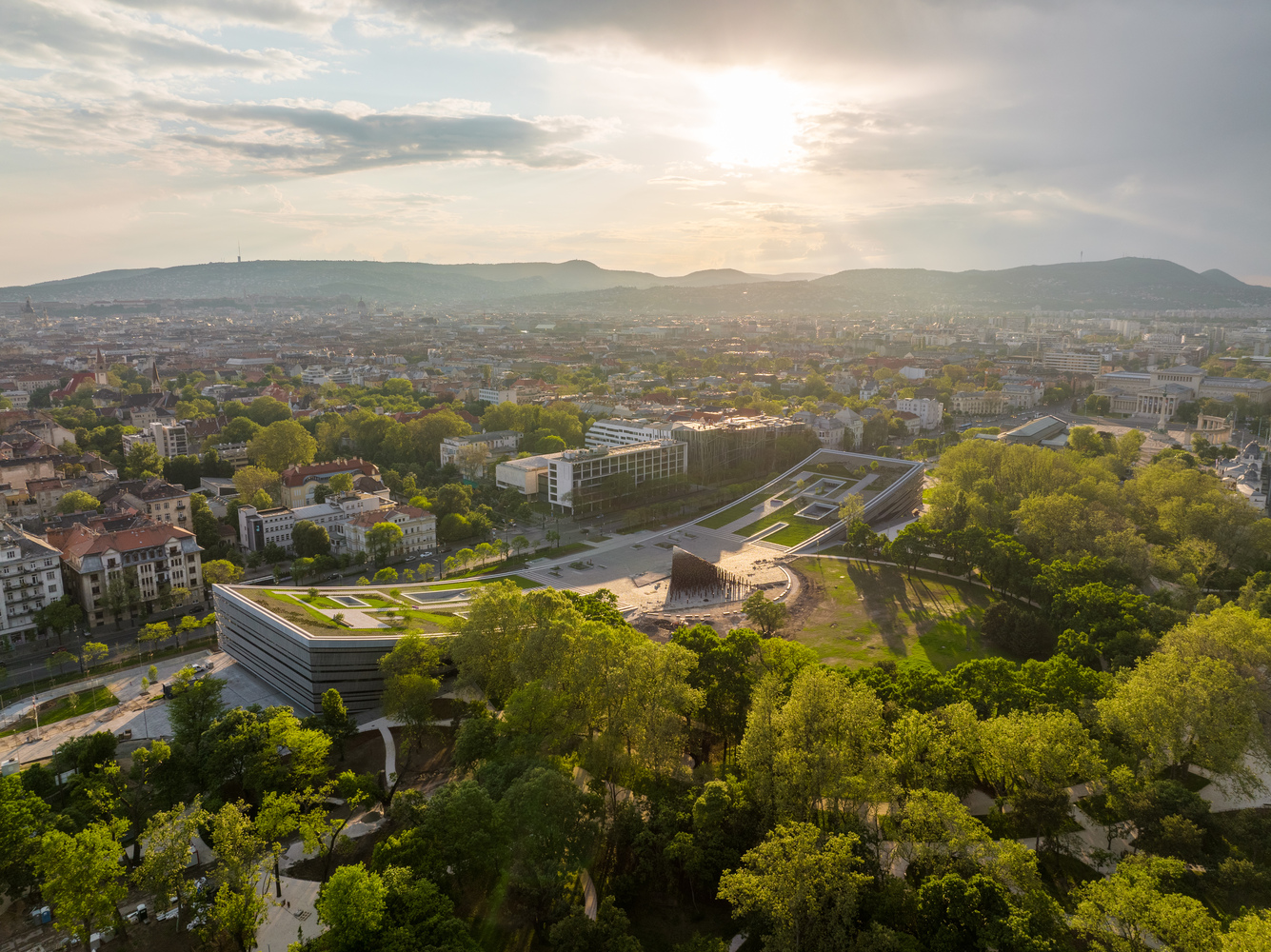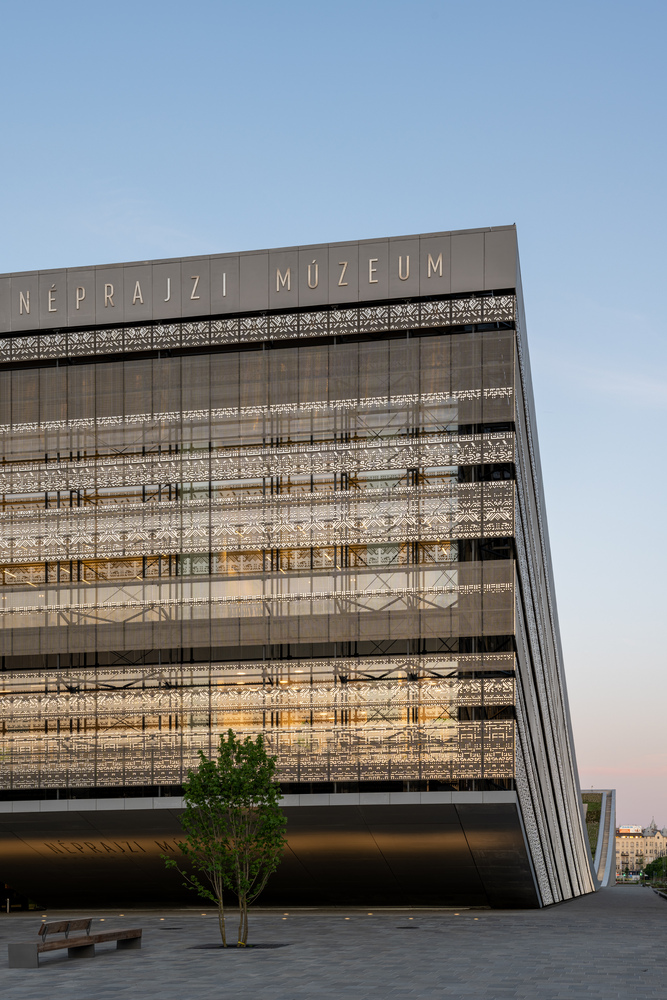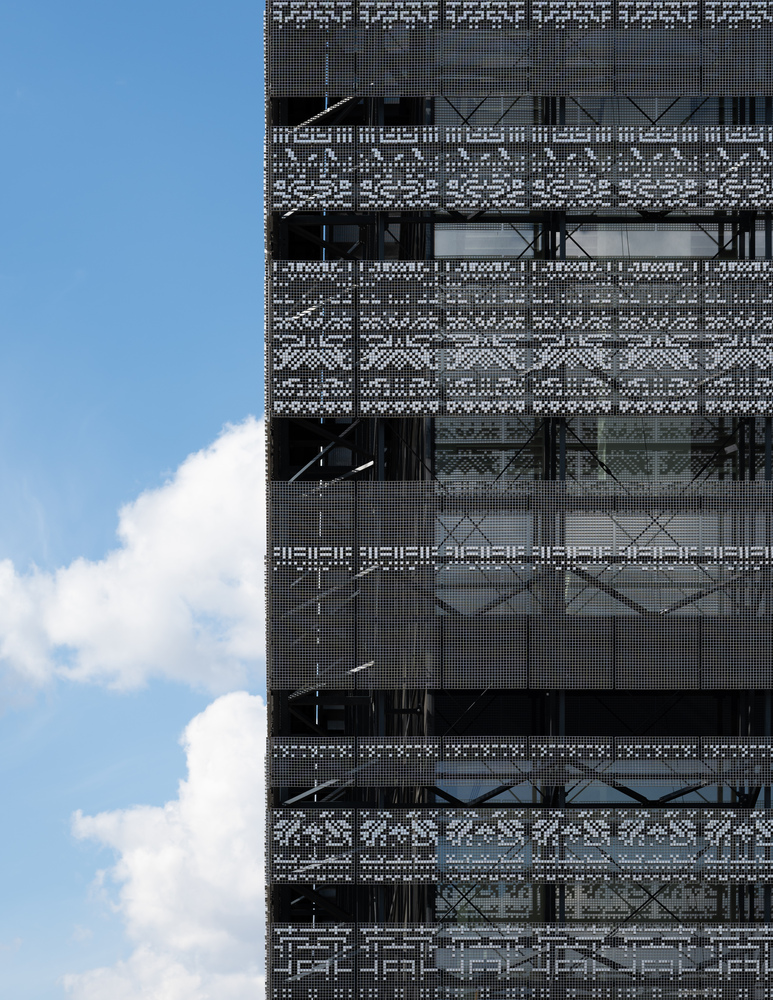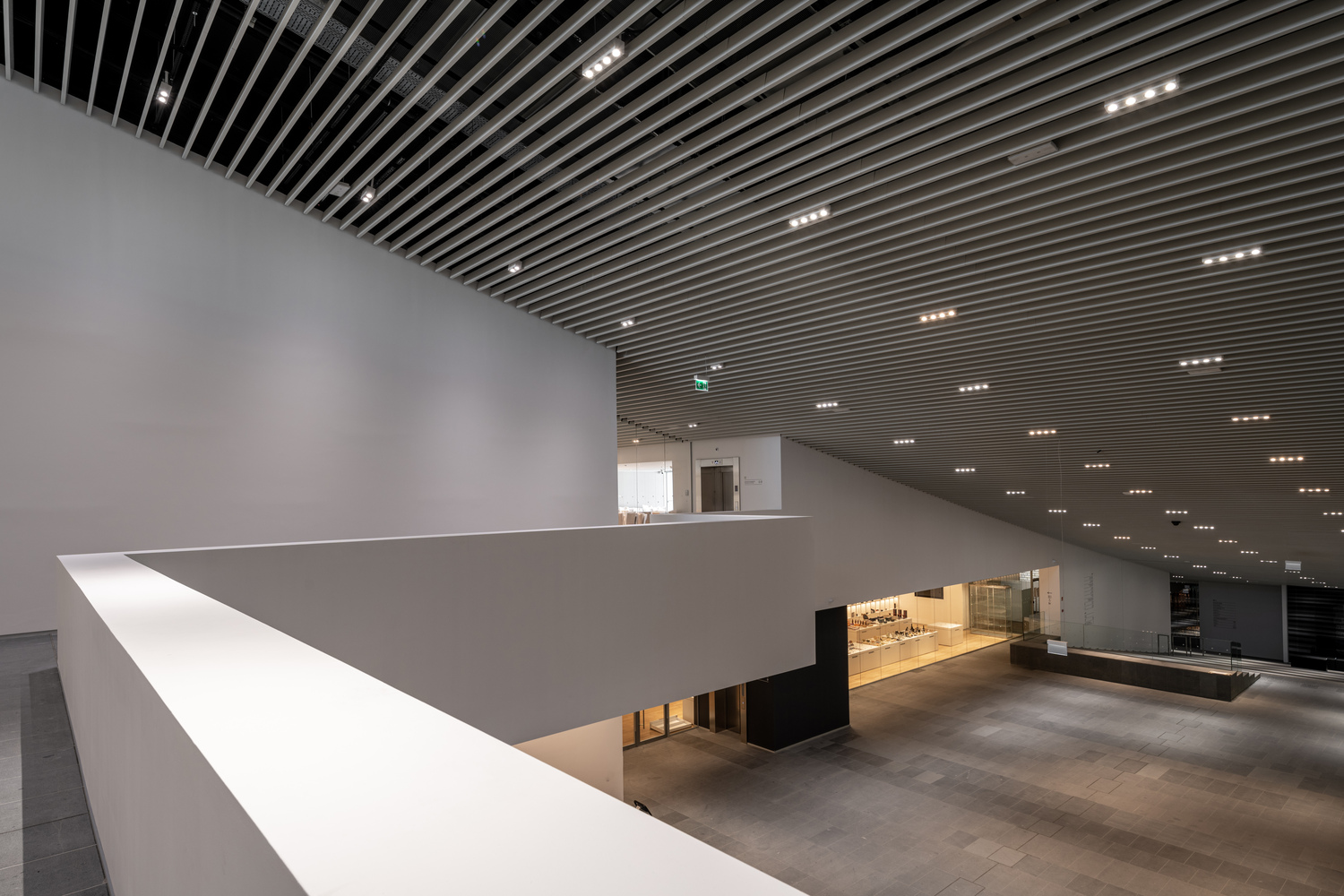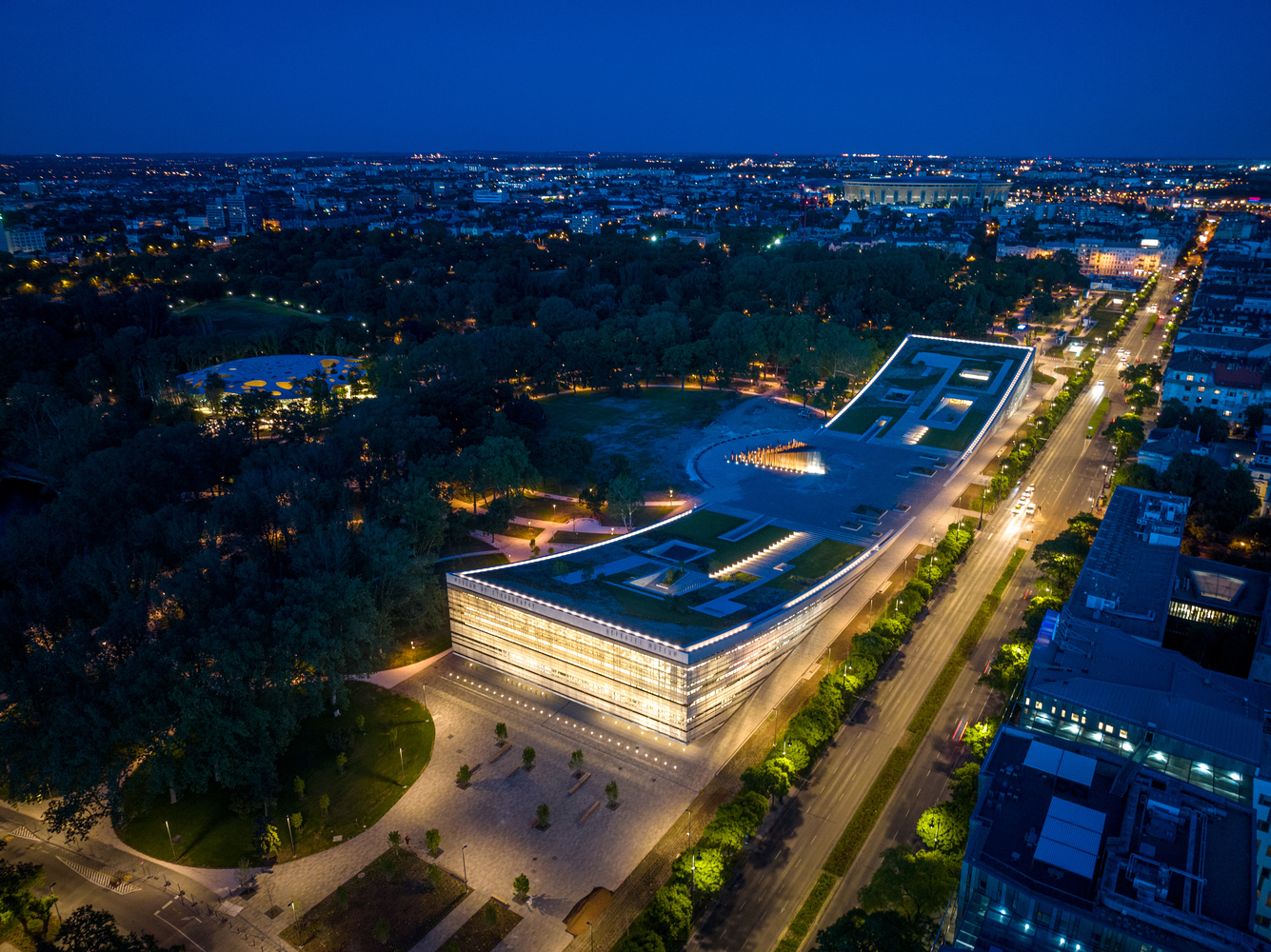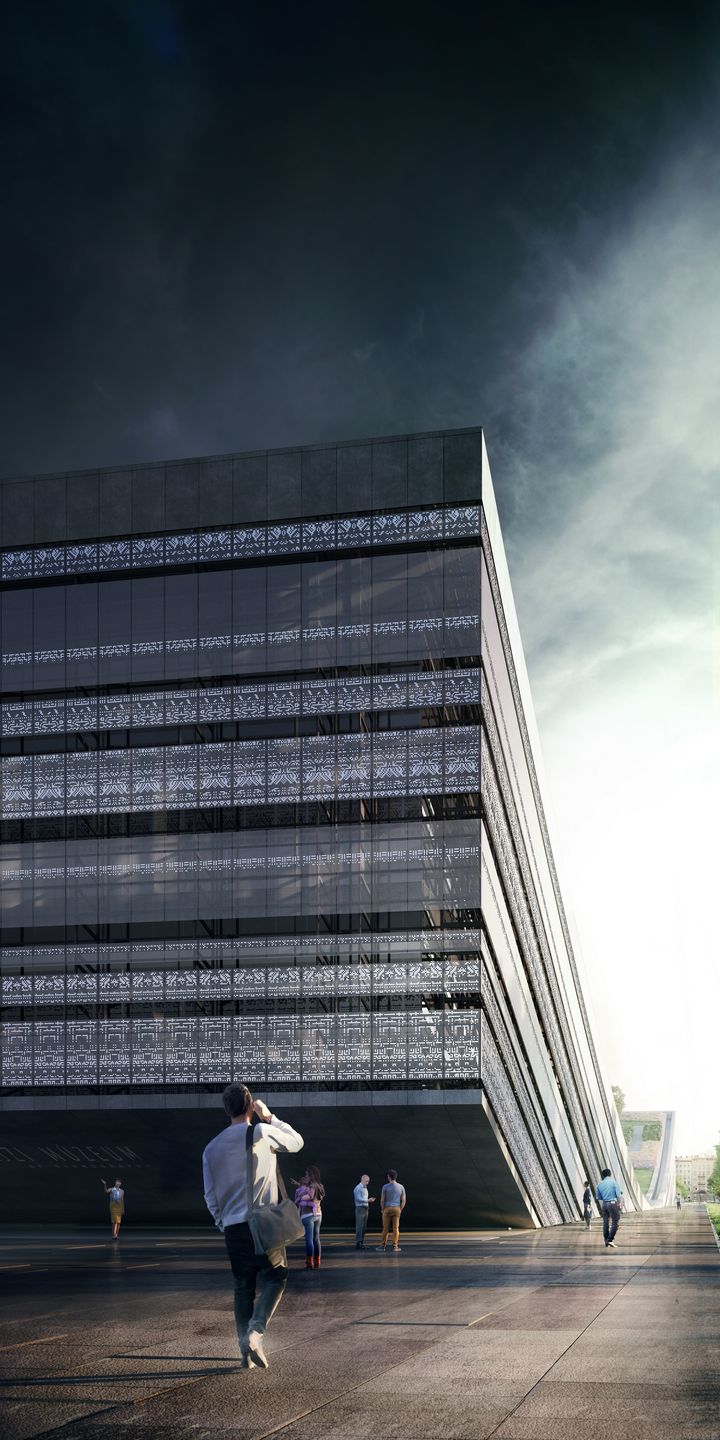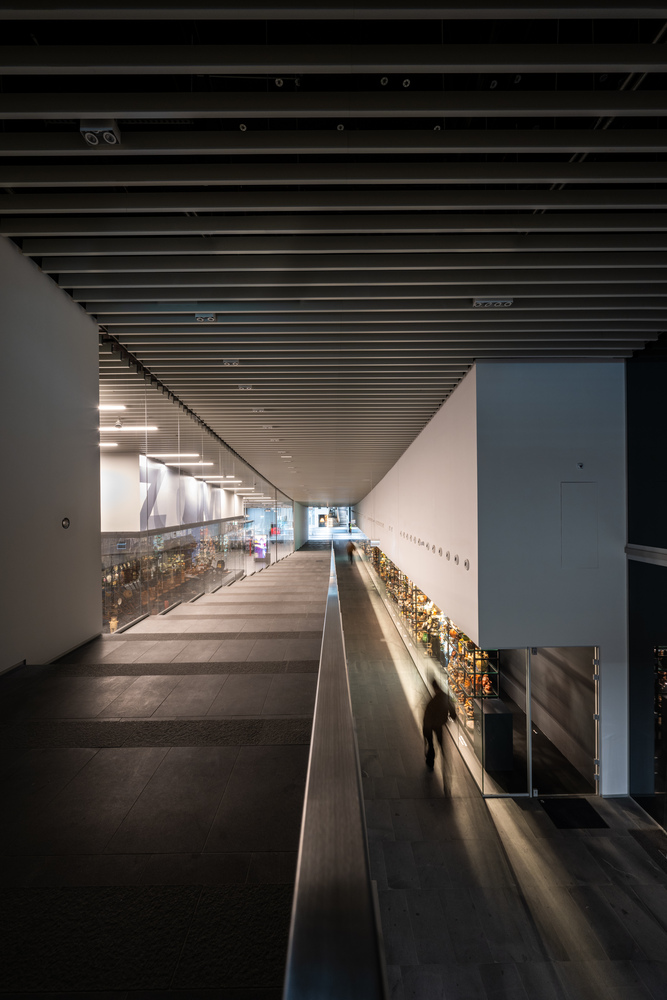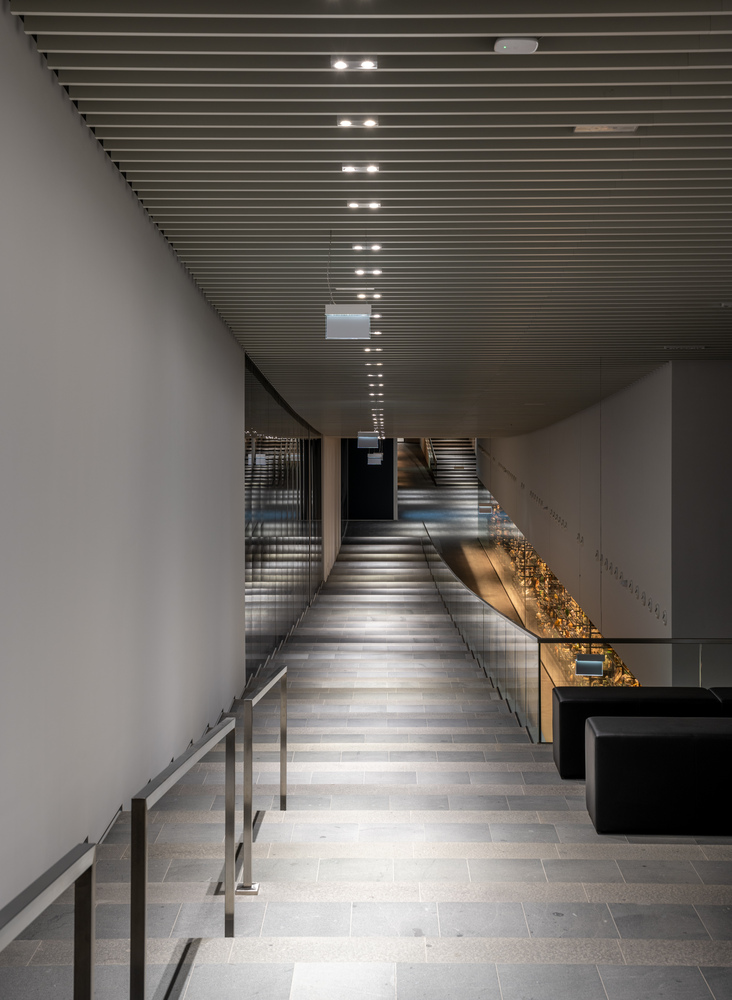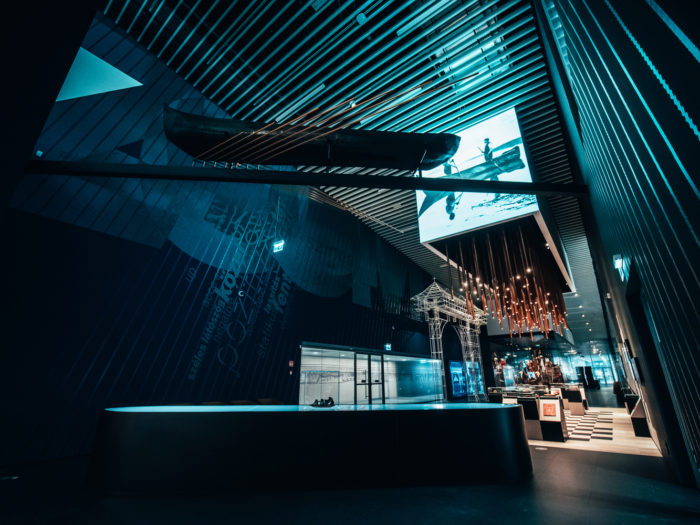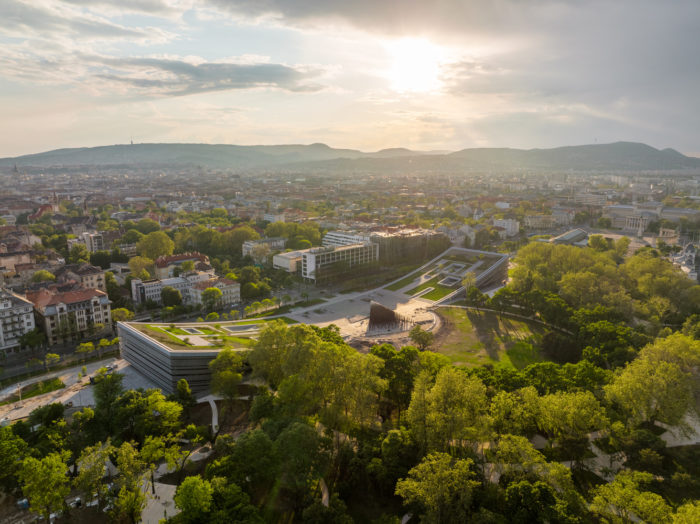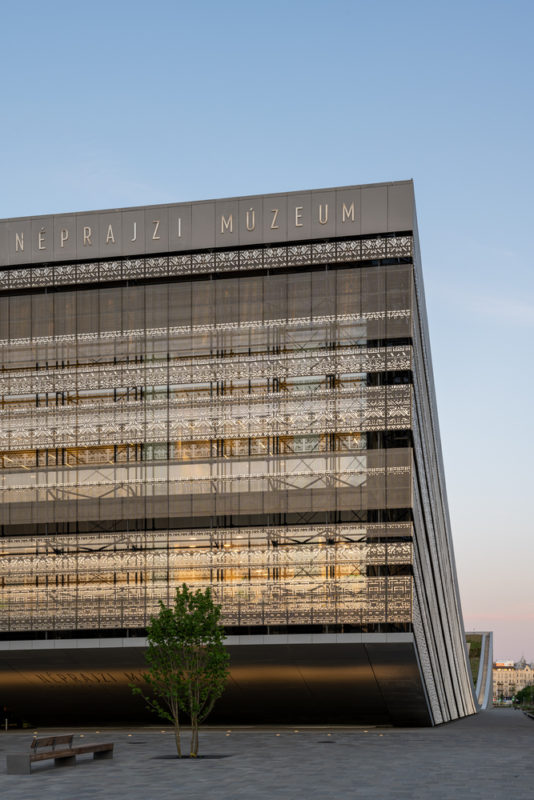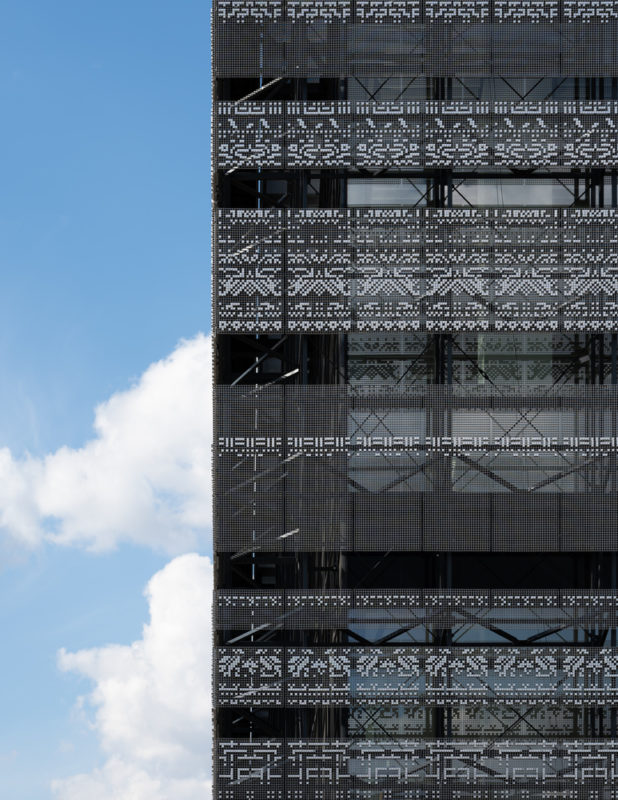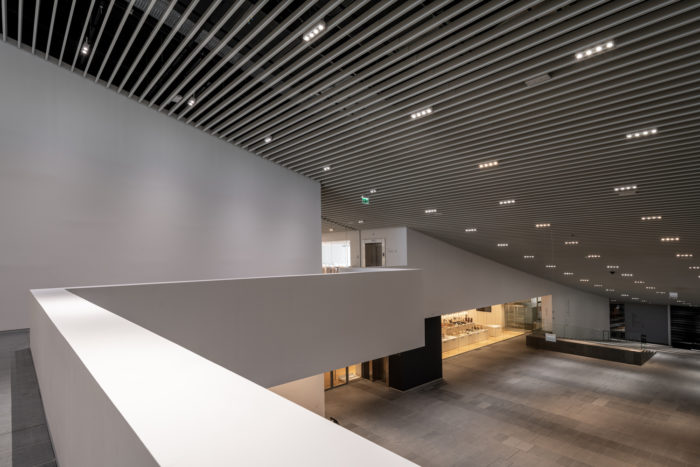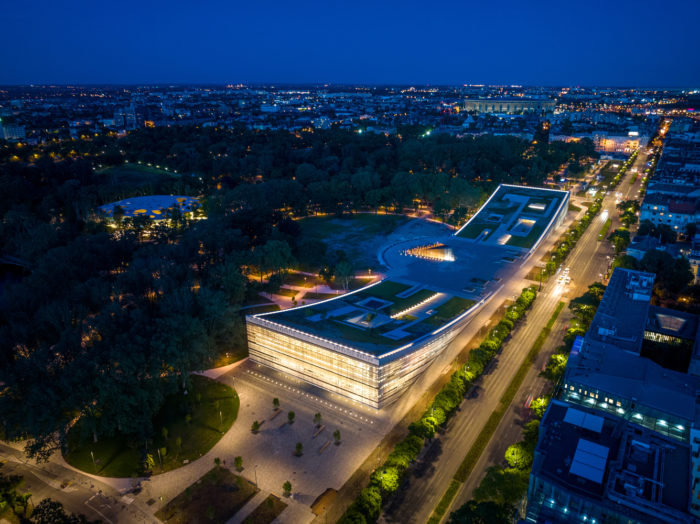The Museum of Ethnography in Budapest is the center of the Hungarian Pavilion at the 2023 Venice Architecture Biennale. The Museum was created by Marcel Ferencz / Napur Architect and finished in 2022 as part of the Liget Budapest Project, one of Europe’s most noteworthy social and urban construction initiatives.
Mária Kondor-Szilágyi, the exhibition’s curator, will use technology to showcase the Museum’s holdings in Venice. Visitors can learn about Hungarian customs through a short animated film called “Ethnozoom” and then use an interactive computer application called “the MotifCreator” to compose their motifs, adding to the global creative commons. The Pavilion will also feature the work of architects Marcel Ferencz, Péter Mátrai, Judit Z. Halmágyi, and light artist Ferenc Haász.
The Museum of Ethnography
The Museum of Ethnography, whose two wings have a combined circumference of 1 km, influenced the exhibition. The area covered by the structure includes the larger-than-7,000-square-meter hillside garden. This circular area is an entrance to the renovated City Park from the surrounding urban environment. The Museum displays a wide range of interesting artifacts.
Guests can see the ornamental framework in a specially lit section of one room. The Soundcylinder, an innovative new instrument by architect and musician Péter Mátrai, serves as the motif that establishes an audible link between the building and the pleasure of music.
The exterior of the Museum of Ethnography is an intricate patchwork of Hungarian heritage, comprised of almost half a million pixels. It features modern transcripts and decorative patterns used at various times by the many cultures showcased in the Museum. In addition, the Museum’s facade attempts to symbolize the country’s unique heritage over the previous 150 years.
The Museum’s extensive inventory collection of Hungarian and international artwork is vectorized and incorporated into the “MotifCreator” and “Ethnozoom” applications that we spoke about previously.
These programs allow users to make and share unique thematic arrangements using a touch screen. From ancient artifacts to the structure of the brand-new building and the neighboring urban landscapes, the film exhibition delves deep into cultural recollections with ethnological layers. Both are dedicated to fostering more cultural exchange and creative expression worldwide. In addition, the pavilion courtyard will feature a scale model of the completed and proposed buildings from the Ligest Budapest Project.
With Lesley Lokko’s “The Laboratory of the Future” as the overarching subject, many countries have chosen to focus on their own heritage, geography, and culture. The Taiwan Pavilion’s “Diachronic Apparatuses of Taiwan” looks at how Taiwanese people across time have used their instincts to influence their environment, encouraging discussion between people who work with manufactured and organic environments to reconsider what we can learn from the latter.
The environmental maintenance and the significant cultural and social problems associated with them are the focus of “Moving Ecologies,” an exhibition at the Chilean Pavilion. Last, the Uruguay Pavilion exhibits “Future Scenarios of a Young Forestry Law,” revealing the nation’s forestry law as a still-developing ecological framework.
